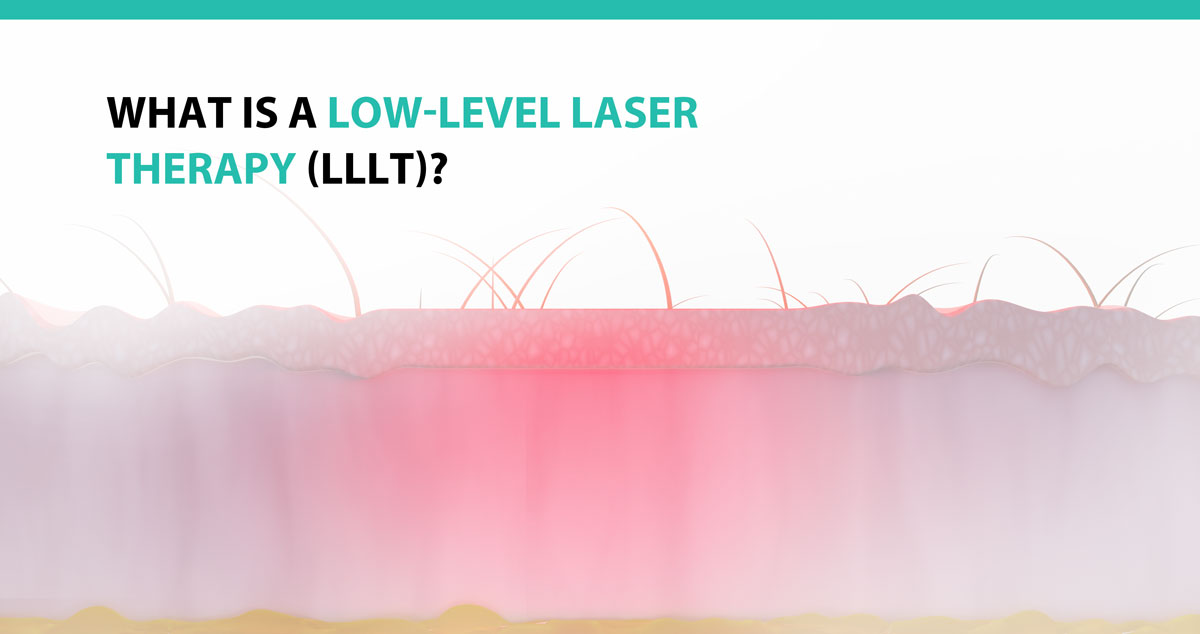
Low-Level Laser Therapy (LLLT) is among the most viable non-surgical hair loss treatments. It’s suitable if you’re experiencing moderate thinning. According to research, the procedure improves blood flow 85% of the time and stimulates hair regrowth in 55% of cases. It’s an effective and quick method that also promises value for money. At the Advanced Medical Hair Institute, we provide the most practical answers to your hair-related inquiries.
How Does Low-Level Laser Therapy Work?
LLLT utilizes the Grotthuss-Draper law of photochemistry. This principle states that a photochemical reaction occurs whenever a chemical substance absorbs light. In this instance, a respiratory enzyme known as cytochrome c oxidase facilitates this reaction through photo-biostimulation.
This procedure involves directing the optimal wavelength of light through your skin tissue to the roots of your hair follicles. The protons then stimulate the relevant enzyme, which produces pro-growth results. They include a healthier scalp and reduced hair shedding, as well as improved thickness and density.
Androgenetic alopecia affects almost half the male population. LLLT is an FDA-approved, non-invasive treatment for this condition. It’s also crucial for tackling other causes of hair loss, such as chemotherapy. Low-level laser therapy helps you fight hair loss in the following ways:
- It stimulates hair follicles to restart and prolong the anagen or growth phase from the resting or telogen phase of the hair cycle.
- It increases the proliferation of hair during the growth phase to boost overall density.
- LLLT improves blood flow to the scalp through vasodilation. This process also reduces the effects of DHT, the essential androgen responsible for male pattern baldness.
Since different wavelengths have varying laser energies, it’s crucial to ensure LLLT sessions penetrate the skin at the correct depth. Dr. Williams recommends 3 to 5 mm using a wavelength of 678 nm. He also performs a thorough evaluation beforehand to gauge your chances of success. While results vary from one patient to the next, they are encouraging overall. Studies show an improvement of up to 39% in hair growth four months after the procedure.
The Pros and Cons of LLLT
One of the benefits of low-level laser therapy is that it’s a non-invasive procedure. Apart from being painless, there is no swelling, scars, and other side effects of surgical methods.
There are also portable laser therapy devices for added convenience. With LLLT, it’s possible to customize your hair growth needs by targeting the crown, hairline, or another part of the scalp.
You should experience noticeable hair growth within three to six months following the procedure. LLLT can also effective as a complementary procedure to other hair loss treatment solutions. Some studies show better short-term results compared to medication.
Although it provides these benefits, LLLT can have adverse effects if you’re on medication that causes photosensitization. This reaction triggers a chemical alteration to the skin, which increases sensitivity to light.
Laser therapy won’t be as effective if you’re experiencing extensive hair loss. You also need two to three weekly sessions for as long as a year to witness optimum results. Your hair loss will resume if you interrupt the process.
There are various LLLT devices and service providers, including home solutions. To avoid disappointment, ensure you receive treatment from a highly trained and experienced professional such as Dr. Joseph Williams.
Laser Hair Therapy Expert in Las Vegas
The Advanced Medical Hair Institute has a reputation for providing the highest quality hair treatment solutions. Our medical professionals continuously receive training in line with the industry’s highest standards. Our lead surgeon, Dr. Joseph Williams, is a member of various influential industry bodies.
In addition to low-level laser therapy, we invest in other state-of-the-art equipment to ensure accurate and natural-looking results. Please schedule a consultation today for more information.










